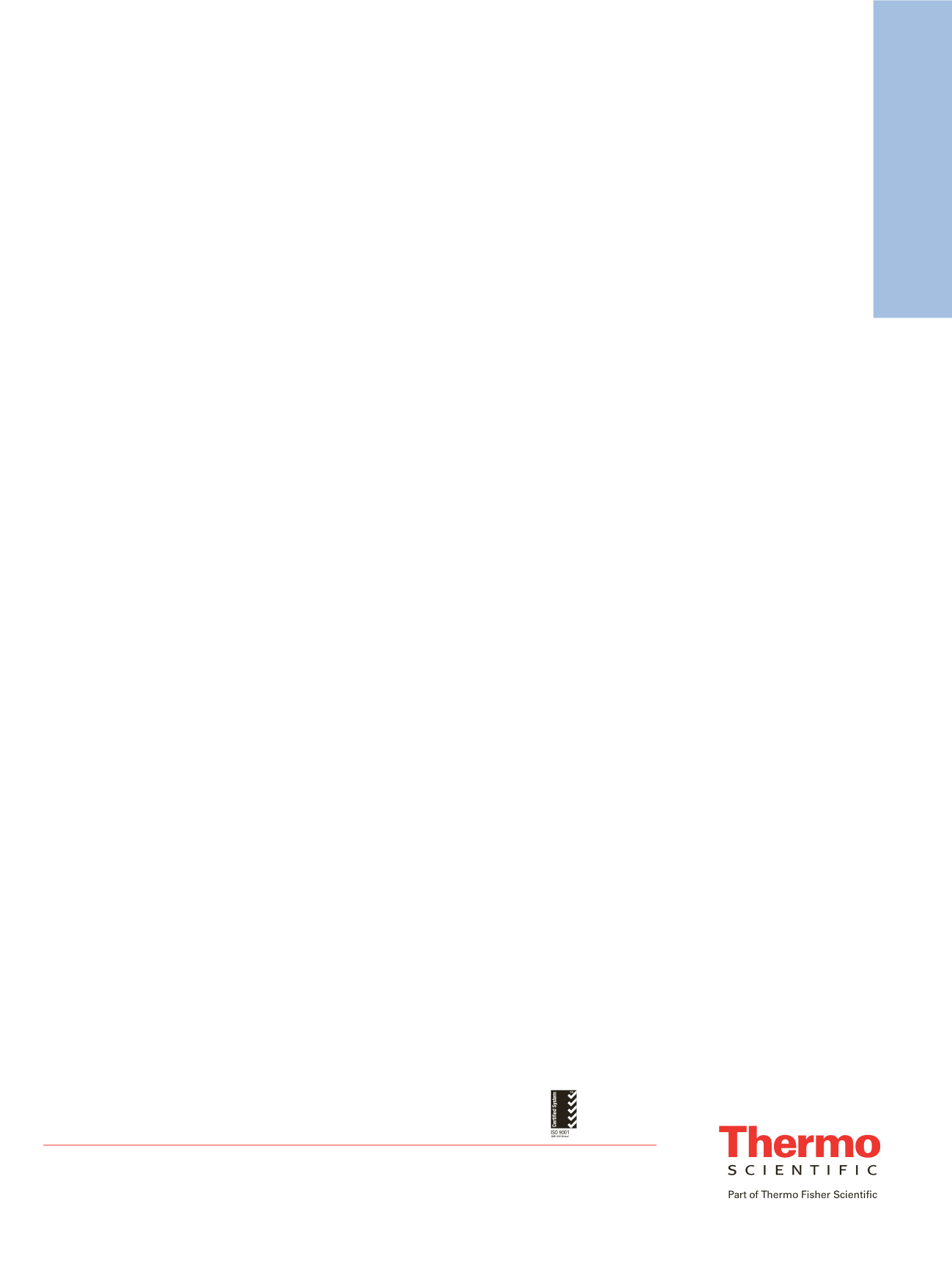

Application Note 1051
AN70386_E 04/13M
Australia
+61 3 9757 4486
Austria
+43 1 333 50 34 0
Belgium
+32 53 73 42 41
Brazil
+55 11 3731 5140
China
+852 2428 3282
Denmark
+45 70 23 62 60
France
+33 1 60 92 48 00
Germany
+49 6126 991 0
India
+91 22 6742 9494
Italy
+39 02 51 62 1267
Japan
+81 6 6885 1213
Korea
+82 2 3420 8600
Netherlands
+31 76 579 55 55
Singapore
+65 6289 1190
Sweden
+46 8 473 3380
Switzerland
+41 62 205 9966
Taiwan
+886 2 8751 6655
UK/Ireland
+44 1442 233555
USA and Canada
+847 295 7500
www.thermoscientific.com/dionex©2013 Thermo Fisher Scientific Inc. All rights reserved. ISO is a trademark of the International Standards Organization.
All other trademarks are the property of Thermo Fisher Scientific Inc. and its subsidiaries. This information is presented as an
example of the capabilities of Thermo Fisher Scientific Inc. products. It is not intended to encourage use of these products in any
manners that might infringe the intellectual property rights of others. Specifications, terms and pricing are subject to change.
Not all products are available in all countries. Please consult your local sales representative for details.
Thermo Fisher Scientific,
Sunnyvale, CA USA is
ISO 9001:2008 Certified.
Conclusion
This work describes a method that uses on-line SPE
HPLC with UV absorbance for determining paraquat
and diquat in drinking and environmental waters in
<10 min per sample. The determination is performed on
an UltiMate 3000 x2 Dual RSLC system controlled by
Chromeleon software. The reduced MDLs achieved
using UV detection and on-line SPE provide a convenient
method for determining these compounds in drinking
and environmental waters. This approach also meets the
MDL requirements specified in both U.S. EPA Method
549.2 and EU 98/83/EC.
References
1.
Basic Information about Regulated Drinking Water
Contaminants
; U.S. Environmental Protection
Agency, Environmental Monitoring and Support
Laboratory: Cincinnati, OH, 1997. [Online] http://
water.epa.gov/drink/contaminants/basicinformation/
diquat.cfm. (accessed Jan 28, 2013).
2. Directive 98/83/EC.
Official Journal of the European
Council, Quality of Water Intended for Human
Consumption
; L 330/42; 1998.
3.
Method 549.2: Determination of Diquat and Paraquat
in Drinking Water by Liquid-Solid Extraction and
High-Performance Liquid Chromatography with
Ultraviolet Detection
; Revision 1.0; U.S. Environmental
Protection Agency, Environmental Monitoring and
Support Laboratory: Cincinnati, OH, 1997.
4. Thermo Scientific Application Brief 114: Improved
Separation of Diquat and Paraquat Using the Acclaim
Mixed-Mode HILIC-1 Column. Sunnyvale, CA, 2012.
[Online]
www.dionex.com/en-us/webdocs/87647-AB114-LC-Diquat-Paraquat-Acclaim-HILIC-
1-05Oct2012-AB70230_E.pdf (accessed Jan 30, 2013).
5. Dionex (now part of Thermo Scientific) Application
Note 274: Sensitive On-Line SPE–HPLC Determination
of Paraquat and Diquat in Drinking and Environmental
Waters. Sunnyvale, CA, 2011. [Online]
www.dionex.
com/en-us/webdocs/110577-AN274-HPLC-Paraquat-
Diquat-Water-05Apr2011-LPN2726.pdf (accessed
Jan 30, 2013).
6.
Product Specifications: Thermo Scientific Acclaim
Trinity Q1 Columns for Trace Analysis of Diquat
and Paraquat
; PS20567_E 07/12S; Thermo Scientific:
Sunnyvale, CA, 2012. [Online]
www.dionex.com/en-us/webdocs/113757-PS-Acclaim-Trinity-
Q1-Jul2012-PS20567_E.pdf (accessed Jan 30, 2013).



















